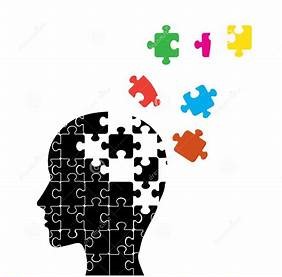Main Body
Limitations
In the mid 1950’s, many labeled ECT as an awful, unsuccessful treatment for schizophrenia. Its low success rate and kinks that weren’t worked out yet gave it a bad reputation. While some believe ECT is a suitable form of treatment for schizophrenia, some disagree and believe taking medication is the best way to go regardless.
There was a two-year study conducted on 279 patients, 27 having schizophrenia by three medical doctors. The doctors performed the study at the Pennsylvania Hospital for Mental and Nervous Disease in Philadelphia, Pennsylvania in 1943. Of the 27 patients, 14 were men and 13 were women from 17 to 43 years of age. Their duration of schizophrenic symptoms ranged from 2 weeks to 22 years. 1 of the 27 (3%) recovered, 2 of the 27 (7%) improved, and 24 of the 27 (90%) were unimproved. These results show that ECT is not an effective form of treatment for schizophrenia. The doctors also treated 20 patients with an undiagnosed psychosis. The doctors strongly suggested that 15 out of the 20 had schizophrenia. Of the 20 patients, 4 men and 16 women were treated. Their duration of illness ranged from 1 month to 10 years. 3 of the 20 (15%) recovered, 2 of the 20 (10%) improved, and 10 of the 20 (50%) were unimproved (Smith, Hastings, & Hughes, 1943).
Benefits of receiving ECT to treat schizophrenia exist. However, there are also risks that may arise from receiving ECT as a form of treatment for schizophrenia. In any situation, if the costs outweigh the benefits, it’s safer and usually better to avoid that option. It depends on the situation which will be worth taking the chance.

Induced memory defects[1] can occur, mostly in the retentive sphere[2] (Kleinerman, 1947). While memory defects occur, their duration range from a couple hours to 9 months. They are not permanent but are prominent in younger patients. Memory defects mask the illness by looking like improvement. It blocks out delusions and hallucinations making one seem to be improved by the treatment (Smith, Hastings, & Hughes, 1943).
ECT produces a lot of complications. For example, fractures can appear in the 4th to 8th

thoracic vertebrae[3] of one’s back. These occur due to the first sudden muscular contraction that takes place in ECT (Kleinerman, 1947). This complication is from the early form of ECT. If other therapies are not used or continued with during the use of ECT, complications can result, including relapses or recurrences (Palmer, Sprang, & Hans, 1951; Fablet-Vergnaux, Loirat, & Vanelle, 2003). Chances of a recurrence are very great (Kleinerman, 1947).
ECT has been known to cause deaths, but a small number. The treatment starts out by placing electrodes[4] on one’s scalp to send electric current through the body. Anesthesia is administered so you don’t feel a thing and a muscle relaxant may follow. The current produces a seizure in the brain and medication is used to prevent body movement that may result. The seizure helps to reverse the symptoms caused by the disease (Goldberg 2016). It can be intensive and could cause suffering to patients. Kleinerman stated, “It is only a means to an end and must be used in conjunction with psychotherapy” (Kleinerman, 1947, p. 302). Using ECT by itself may be successful depending on certain circumstances for a patient. Using it along with psychotherapy will make the treatment even more effective.
[1] Memory defects are shortcomings and imperfect memories you may forget or lack.
[2] Retentive sphere is the place in your brain that helps you retain information.
[3] Thoracic Vertebrae is the part of the spine in the upper back and abdomen.
[4] Electrodes are conductors through which a current enters or leaves an intervening substance.
